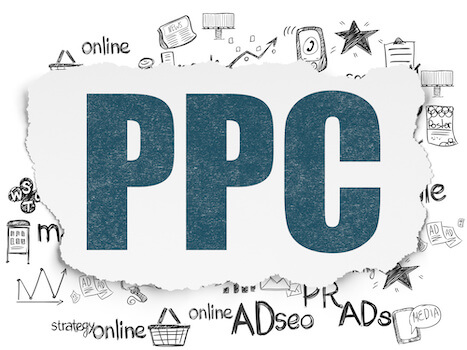Internet Marketing Company


Internet marketing involves marketing your company, brand, products and services across various channels online. There are multiple channels in internet marketing. Each channel offers a unique approach and may be used in conjunction with other avenues to achieve the results needed to move your business forward. It is important to note that not all channels are right for all businesses
If you’re not sure what any of those mean, it’s okay. We’re going to guide you through the digital marketing world and explain the basic intricacies of each aspect. It’s more than posting on Instagram, Twitter, Facebook or writing a blog.
SEO can be summed up as one word – Google. There are other search engines like Duck Duck Go or Bing/Yahoo, but because Google is the most used, people build their operations around them. SEO is not a one time operation, but rather a continual practice with many moving parts.
We’ll break down SEO into two parts (we could easily do more parts, but we have a lot to cover):

SEO is configuring your site to drive organic traffic (not paid traffic) to your website.
SEO includes:
There isn’t one thing that makes a site rank over another, it a summation of the parts. Everything working together to provide the best user experience for your website visitors. The benefits of implementing SEO is that it will have lasting effects and pay for itself over and over. It is important to note that SEO takes time, and will not increase business overnight.
According to Moz, one of the top SEO tools around, “search engines have three primary functions
In layman’s terms, crawling is essentially Google scouring the internet for updated information about specific subjects. If they like what they see, they add it to the index. Once added, it’ll be displayed to all inquirers. Now just because it’s indexed, doesn’t mean your information was the best. Google ranks your content based on how helpful it’ll be to a searcher. The more relevant it is, the higher the rank.
Its not just about content, Google looks at other elements like how fast your site loads, is it coded correctly, does it work well on mobile devices, just to name a few.
SEO is just one aspect of internet marketing. While SEO is slow going at first, when done properly pays for itself time and time again.
When you begin a campaign, you must monitor it daily and changing it when you see that it’s no longer effective. You must fine tune it by:
Add and/or remove PPC keywords: Not every word will hit your mark. If that’s the case, remove the words that are not working and add the ones you haven’t tried yet. It’s an experimental process and requires a tedious amount of trial and error.
Adding negative keywords: Negative keywords are just as important as keywords. You not only want your ads to know who you’re targeting, but you also want them to know who you’re not targeting. This will narrow down your target audience and reduce spending.
Split ad groups: Split your targeted audiences apart so you can find more relevant groups
Refine landing pages: You never want to send your PPC traffic to the same exact landing page. Adapt your website content and CTAs to match the individual search queries.
PPC can get convoluted quickly. It’s good to know how the basics work before you begin your PPC campaign otherwise you’ll be wasting valuable time and resources.

Now that you have all this organic traffic going to your website from your fantastic SEO campaign, what now? You have all these people going to your site and now it is time to convert them into active customers. You attracted your audience into the store, so it is time sell. That’s what CRO does. You can try to implement
There is no one designated strategy for CRO. Though there is one agreement amongst CRO analysts: Do your research. Research is what will ultimately make your final sale. Some view CRO as a scientific process others have their own calculated formula that determines what goals they want to achieve with CRO. What it comes down to is knowing your target audience.
You would think that in 2020 e-mail is dead, but in fact, emails are social media managements’ bread and butter. E-mail allows us to be in contact with our already loyal customer base. We can update people with sales, certain events, ideas that we want to implement in the future. It allows a lot of personal interaction. It also is a great strategy to turn people who signed up for emails into a customer. With a 4400% ROI, email marketing is not something to be ignored.
To have people sign up for your email list, you must make it appealing. Like any other ad, right? You have to make them want to invite you inside their little mailbox. It’s like their home. You can give them
Make their time worthwhile. You must make these leads free to consume and easily accessible. If your email is long winded and not interesting, they’re going to opt-out quickly. There’s a lot of creative liberty with emails.
Content Marketing is the backbone of all marketing. It’s an amalgamation of content with a purpose. When you begin your content marketing journey, you want to have a goal in mind. As someone who sells -insert product here-, what does that make you? Hopefully a professional who can answer questions about what exactly it is you do and explain why it’s important. What makes content marketing different from traditional forms of marketing is that you’re not actually marketing to people. You’re informing them in a very educational way.
You are someone who knows the answers to all your audience’s questions who also happens to sell a related product. An example of this would be a newsletter that answer questions about gardening: What products to use, what to look for in soil, what someone should do about the pests that ruin a plant, which plants grow best in shade vs sunlight, etc. In content marketing, more often than not, you’re very subtly guiding your audience to you, but not outright. You’re building their trust and allowing your audience to come to the conclusion that they need you on their own.
Since the birth of the Internet, people all over the world have looked to various forums and blogs to express their ideas about their products. Prior to the internet businesses didn’t have the resources they do today to communicate with their audience in a similar way. Businesses had their newspaper slots, magazines, fan letters and mail-in feedback. Since then, all of those ways of marketing and receiving feedback has gone digital. Businesses utilize Facebook, Instagram, Twitter, and TikTok as their main forms of advertising their products.
With social media marketing, you not only receive feedback from your target audiences, but also from the social media services themselves. Facebook and Instagram give you engagement statistics. From there, you’re able to gauge how your content is reaching your audiences and create more content based on the level of engagement. All of this for free. Granted, for direct advertisement slots, you do have to pay Facebook and by association Instagram, but as far as reaching new customers and promoting your brand on your page, it is free. People can share your ads and content. They can engage with you on a very personal level. Social media marketing in a nutshell is your own branded newspaper that states your mission, advertises your products, and engages with your targeted customer base all at your fingertips.
Affiliate marketing is vastly different than the standard marketing we see on billboards, social media, and television. It’s closer to content writing, but instead of content writing for an educational purpose, you’re making money from someone else’s content. That’s how many influencers today make an income. They find products they like, promote it, and the company (i.e. you) pay them commission based on their sales.
There is a two-way relationship with affiliate marketing: The merchant and the marketer. The merchant creates, sells, and brands their product. The marketer tries to convince their community or potential customers to buy your product and you pay the marketer a certain percentage of that sale.
We’ve went through the general aspects of social media marketing and what a digital marketing agency can do for you. An online presence in this era is absolutely mandatory if you want your company to have a chance. The general public practically lives on their phones and are constantly being bombarded with information. The biggest mistake you can make is not letting the online world read about what your product or service can do for them.
Just A Web Company is an award-winning digital marketing agency and web development team in Temecula, California. We can give you the online presence you require. We can increase your ROI and manage your online marketing strategies. Our services will be available to you 24/7. Call us now and we can give you more information.